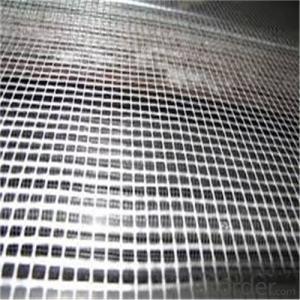Fiberglass Fabrics: A Guide to Selection and Use
When it comes to materials that are both versatile and resilient, fiberglass fabrics are hard to beat. These fabrics are woven from fine strands of glass, making them incredibly strong and durable. They’re used in a wide range of applications, from construction to aerospace, and everything in between. But with so many types and uses, how do you choose the right fiberglass fabric for your project? And how do you use it effectively? This guide is here to help you navigate the world of fiberglass fabrics with ease.
The Wonders of Fiberglass Fabrics
Fiberglass fabrics are known for their strength and light weight. They’re resistant to many types of chemicals, making them a popular choice for industrial applications. But did you know that they’re also great for insulation? Fiberglass fabrics can trap heat, making them perfect for keeping a space warm or cool, depending on your needs.
Choosing the Right Fiberglass Fabric
When selecting a fiberglass fabric, consider the following factors:
– Type of Fiberglass: There are several types of fiberglass fabrics, including woven roving, chopped strand mat, and surfacing veil. Each type has its own unique properties and applications.
– Strength: The strength of the fabric will depend on the type of fiberglass and the way it’s woven. Look for a fabric that offers the right balance of strength and flexibility for your project.
– Weight: Fiberglass fabrics come in various weights, from lightweight to heavy-duty. Consider the weight of the fabric and how it will affect the performance of your project.
– Finish: Some fiberglass fabrics have a special finish that can enhance their performance. For example, a resin-soaked fabric might be easier to work with and provide a smoother finish.
– Application: Think about where and how you’ll be using the fabric. Will it be exposed to the elements, or will it be used indoors? The application will help determine the best type of fabric for your needs.
Cutting and Shaping Fiberglass Fabrics
Once you’ve chosen the right fabric, it’s time to cut and shape it for your project. Here are some tips to make the process easier:
– Use the Right Tools: A sharp utility knife or scissors will make cutting fiberglass fabric much easier. Be sure to use a cutting mat to protect your work surface.
– Measure Twice, Cut Once: As with any project, it’s important to measure carefully before cutting. This will help ensure that your fabric fits perfectly and minimize waste.
– Smooth Edges: After cutting, you may want to smooth the edges of the fabric to prevent fraying. This can be done with a light sanding or by using a heat gun to gently melt the edges.
Applying Fiberglass Fabrics
Applying fiberglass fabric can be a bit tricky, but with the right technique, you can achieve professional results. Here are some steps to follow:
– Prepare the Surface: Make sure the surface you’re applying the fabric to is clean and free of any debris. This will help the fabric adhere properly.
– Apply Resin: Before applying the fabric, apply a layer of resin to the surface. This will help the fabric bond to the surface and create a strong, durable finish.
– Lay the Fabric: Carefully lay the fabric onto the resin-coated surface, making sure there are no wrinkles or bubbles. Use a roller to press out any air bubbles and ensure the fabric is fully saturated with resin.
– Multiple Layers: Depending on the strength and durability you need, you may want to apply multiple layers of fabric. Just be sure to apply a layer of resin between each layer to ensure proper adhesion.
– Cure the Project: After applying the fabric, allow the project to cure for the recommended amount of time. This will ensure that the resin hardens and the fabric sets properly.
Maintenance and Care of Fiberglass Fabrics
Proper maintenance and care will help extend the life of your fiberglass fabric projects. Here are some tips:
– Clean Regularly: Regular cleaning will help keep your fiberglass fabric looking its best. Use a mild soap and water solution to clean the surface, and be sure to rinse thoroughly.
– Avoid Abrasion: Fiberglass fabric can be damaged by abrasive materials, so be careful when cleaning or handling the fabric.
– Protect from the Elements: If your project will be exposed to the elements, consider applying a protective coating or sealant to help protect the fabric from UV rays and other environmental factors.
The Future of Fiberglass Fabrics
As technology advances, so does the use of fiberglass fabrics. New applications and innovations are being developed all the time, making fiberglass fabrics an exciting material to work with. From stronger, lighter fabrics to new finishes and coatings, the future looks bright for this versatile material.
In conclusion, fiberglass fabrics offer a wide range of benefits for a variety of applications. By understanding the different types, choosing the right fabric for your needs, and following proper application and care techniques, you can create strong, durable, and long-lasting projects. So go ahead, unleash your creativity, and explore the exciting world of fiberglass fabrics!

